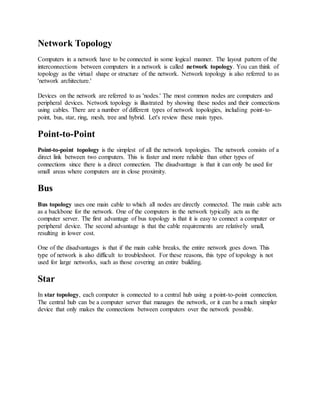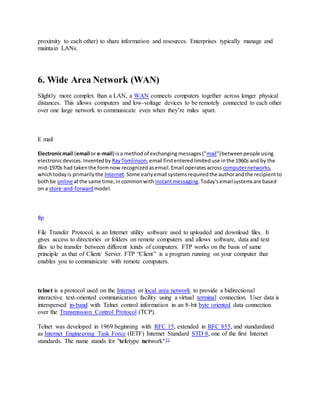The document discusses different types of network topologies including point-to-point, bus, star, ring, mesh, tree and hybrid. It provides details on point-to-point, bus and star topologies. Point-to-point topology connects two computers directly in close proximity. Bus topology uses one main cable that connects all nodes and if it breaks the whole network fails. Star topology connects each computer to a central hub allowing for easier troubleshooting than bus topology.





![Usenet(/ˈjuːznɛt/) isaworldwide distributeddiscussionsystemavailableoncomputers.Itwas
developedfromthe general-purposeUnix-to-Unix Copy(UUCP) dial-upnetworkarchitecture. Tom
Truscott and JimEllis conceivedthe ideain1979, andit wasestablishedin1980.[1]
Users readand post
messages(called articles orposts,andcollectivelytermed news) toone ormore categories,knownas
newsgroups.](https://image.slidesharecdn.com/networktopology-190409093417/85/Network-Topology-6-320.jpg)